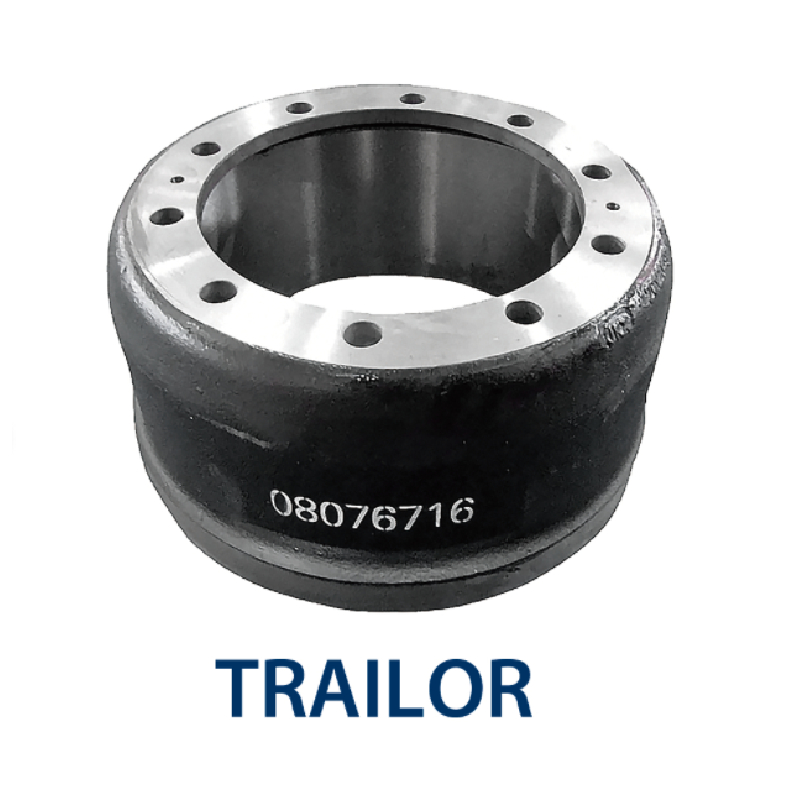nóv . 16, 2024 03:49 Back to list
brake drums vs rotors
Brake Drums vs. Rotors Understanding the Differences
When it comes to vehicle braking systems, two primary types of components are often discussed brake drums and brake rotors. Both play critical roles in ensuring a vehicle can stop efficiently and safely, but they do so in different ways and have distinct characteristics. Understanding the differences between brake drums and rotors can help vehicle owners make informed decisions about maintenance, replacement, and performance.
What are Brake Drums?
Brake drums are cylindrical components that house the braking mechanism for drum brakes. They are made of strong materials such as cast iron or aluminum and are located at the rear wheels of many vehicles. When the driver presses the brake pedal, hydraulic pressure forces brake shoes outward against the inner surface of the drum. This contact generates friction, slowing down the wheel's rotation and ultimately bringing the vehicle to a halt.
One of the primary advantages of brake drums is their effectiveness in providing stopping power, especially in older vehicles. They tend to be more robust in terms of heat dissipation and can handle higher torque applications, making them useful in heavy-duty vehicles. However, brake drums can also be prone to fading under extreme conditions, such as continuous heavy braking. They can lose effectiveness if the vehicle is frequently operated in severe conditions, such as towing or mountainous terrain.
What are Brake Rotors?
Brake rotors, also known as brake discs, are flat, round components that work with disc brakes. Unlike brake drums, rotors are generally installed on both the front and rear wheels of modern vehicles. When the brakes are applied, calipers force brake pads against the surfaces of the rotating rotor, creating friction that slows or stops the vehicle.
Rotors are typically made from materials like cast iron, carbon composite, or even carbon-carbon, depending on the vehicle’s performance requirements. One significant advantage of rotors is their superior heat dissipation capabilities. This property helps prevent brake fade during extended or aggressive braking. Disc brakes also offer better water resistance, making them more reliable in wet conditions.
Moreover, brake rotors are easier to inspect and replace than brake drums, leading to more straightforward maintenance. Vehicles equipped with disc brakes often have improved overall braking performance, better response times, and enhanced stopping power, which is why they are the standard in modern automotive design.
brake drums vs rotors

Key Differences
1. Design and Functionality The primary difference between brake drums and rotors is their design. Brake drums encase the brake shoes, while rotors work with brake pads. This difference results in varying methods of generating friction internal contact in drum brakes versus external contact in disc brakes.
2. Heat Dissipation Brake rotors typically dissipate heat more effectively than drums, reducing the likelihood of brake fade. This heat management is crucial for high-performance or frequent-stop situations.
3. Performing in Various Conditions Rotors perform better in adverse weather conditions as they are less likely to collect water and debris. Brake drums, on the other hand, can struggle in wet conditions due to their enclosed design.
4. Maintenance and Replacement Brake rotors are generally easier to inspect and replace than brake drums. Mechanics can quickly assess rotor wear and thickness, whereas drums may require removal and disassembly for thorough inspection.
Conclusion
Both brake drums and rotors have their advantages and disadvantages. The choice between the two often depends on the type of vehicle, its intended usage, and driver preferences. For older vehicles and heavier loads, brake drums may still be valid due to their robust design. However, for modern vehicles and high-performance demands, brake rotors are typically the preferred option due to their superior stopping power, better heat dissipation, and easier maintenance.
Ultimately, understanding the differences between brake drums and rotors can help vehicle owners make more informed choices, ensuring their vehicles remain safe and reliable on the road. Always consult with a certified mechanic when considering brake system repairs or upgrades to ensure optimal performance and safety.
-
Explore Japan: Ultimate Travel Guide & Authentic Experiences
NewsAug.19,2025
-
Your Brake Drum Man: Premium & Reliable Brake Drums for Sale
NewsAug.18,2025
-
ROR Web Development: Build Fast, Scalable, Secure Apps
NewsAug.17,2025
-
Scania Brake Drums: OEM Quality for Optimal Safety & Durability
NewsAug.16,2025
-
R.V.I: Advanced Remote Visual Inspection for Precision
NewsAug.15,2025
-
Discover HYUNDA: Innovative Vehicles, Equipment & Solutions
NewsAug.14,2025
